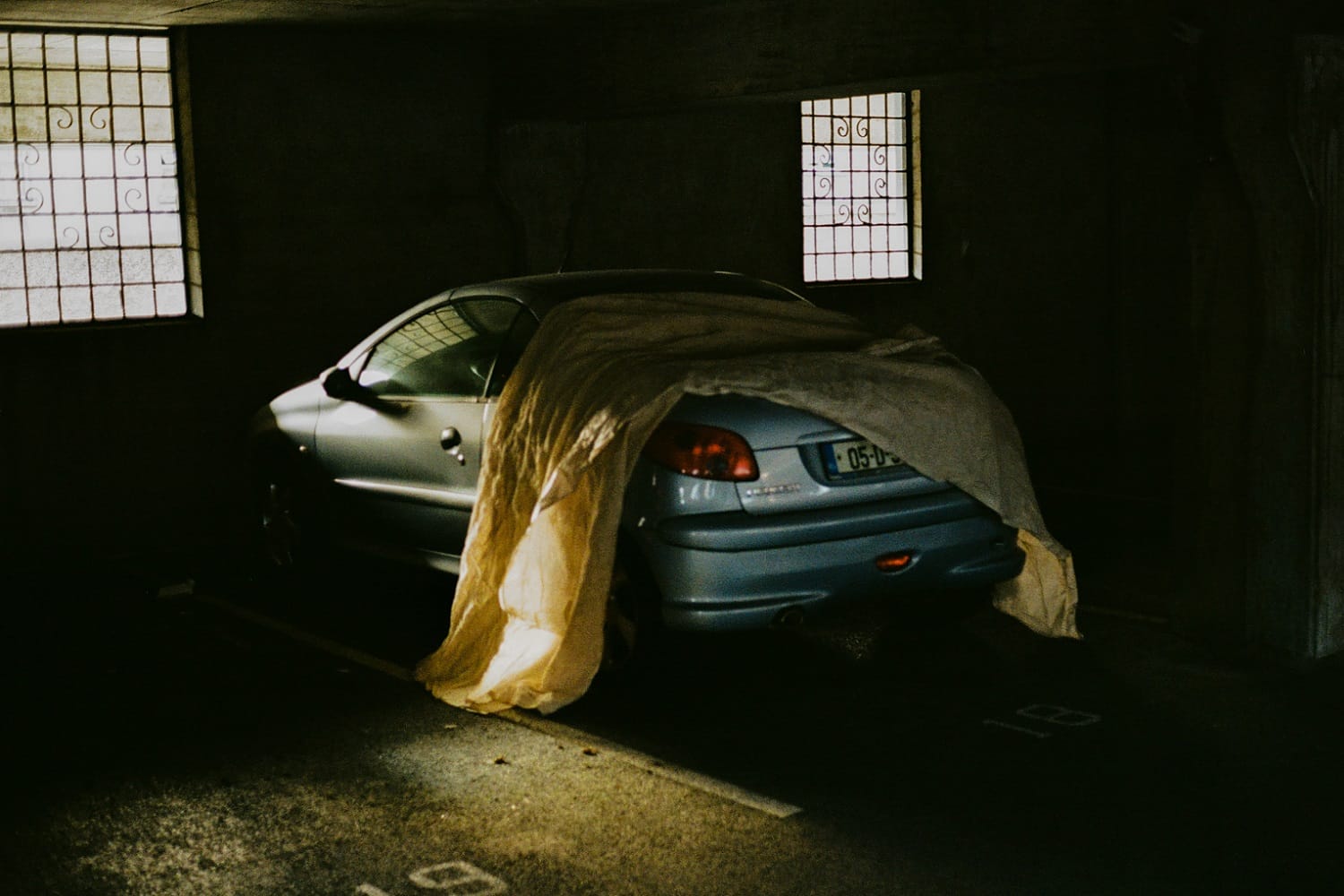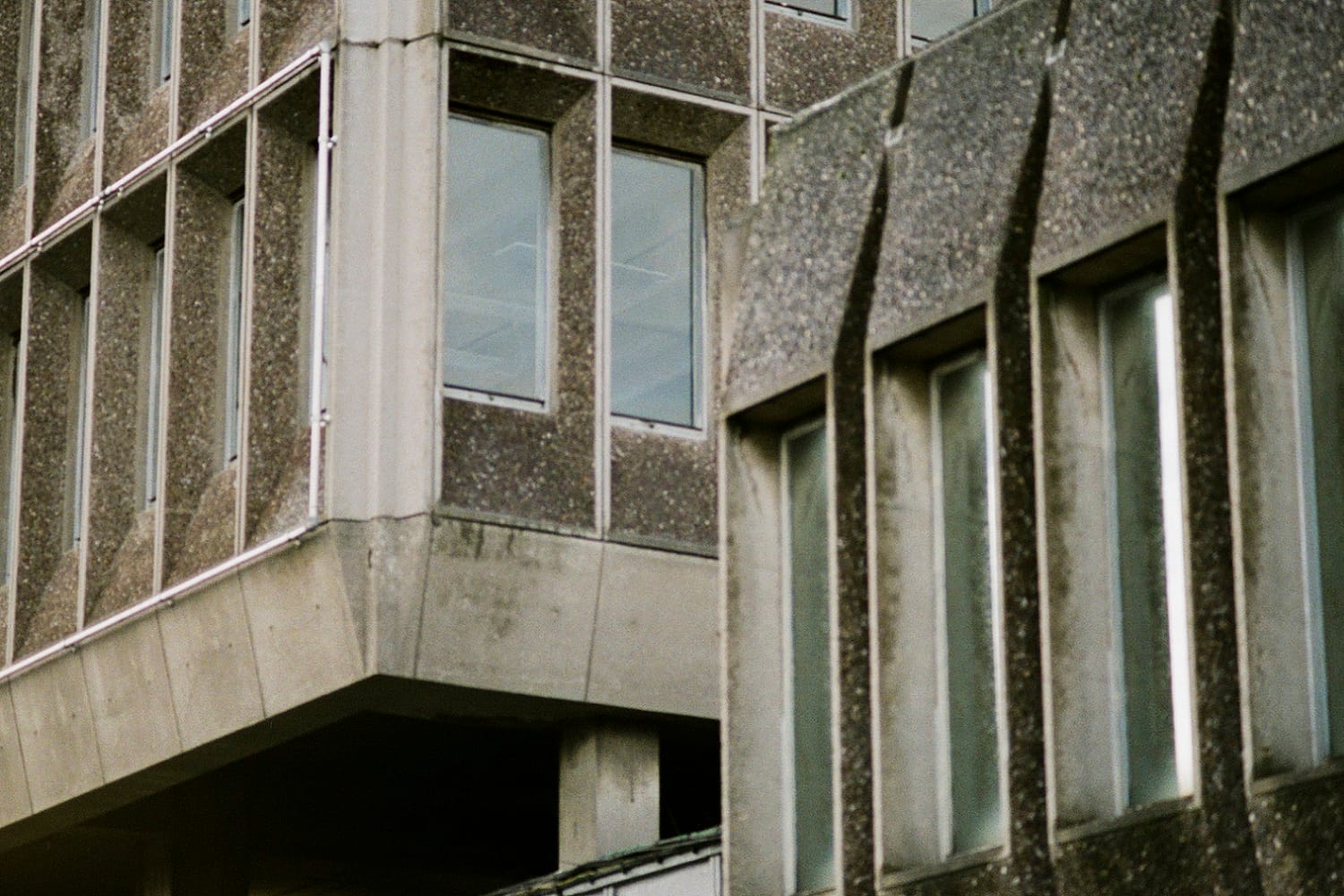What’s the best way to tell area residents about plans for a new asylum shelter nearby?
The government should tell communities directly about plans for new asylum shelters, some activists and politicians say.
In his new work The Drift///Parallax, artist Brian Teeling focuses on the presence of absence, the absence of presence – and the Phibsboro Shopping Centre.

Brian Teeling often dwells on the question of his presence in photographs.
He goes through old family photos to see if he shares any stylistic traits with his parents, be it in the framing, or the use of colour and light, he says.
Inversely, in his own self-portraits, often taken in front of mirrors, he tends to obscure his face, sometimes partially, other times entirely.
“They are like diary entries,” he says, “but it’s almost like I’m not present. More often than not I feel I’m not at the wheel, in body or mind. Things are just happening, and I have to just pinch myself and go, ‘This is reality.’”
What fascinates him are ideas such as the absence of presence and the presence of absence in images, he says at the launch of his latest work, The Drift///Parallax on 25 August.
“A lot of my self-portraits, I feel there’s a certain absence that I felt in taking those, and it can be informed by, mainly, like depression,” he says.
The Drift///Parallax is a triptych of booklets that draws from this idea in its examination of masculinity and its relationship with both queer and working-class identity.
Assembled primarily from everyday images – a car, his bed, self-portraits, the Phibsborough shopping centre, tower cranes – these, he weaves with lyrical texts and a science-fiction premise.
With different colour schemes, Teeling examines his own personality and the different facets of a romantic relationship by way of speculating on who he might be if the Earth were to orbit another star than the sun.
“I was imagining different versions of myself,” Teeling says. “Emotionally, would I feel the same? How would my world look under a red sun? Would I still have the same level of depression, or lust, or doubt?”
Two years in the making, this trio of booklets is Teeling’s first major collection in an already prolific body of work that is at times as fiercely political as it is intensely personal.
Inside the reception of the Dean Arts Studios on Chatham Row, at the launch of The Drift///Parallax, Teeling exhibits a trio of photos from the collection.
The pictures, reproduced three times as A3 posters, form a three-by-three grid, depicting environments, remote, urban, and seemingly lonesome on their surface.
Each one is extracted from one specific booklet, Vega, Arcturus and Rigel – named after three of the five brightest stars in the night sky. Corresponding to both a star and a concept, the photographs are also given their own colour palettes.
The yellow of the Vega volume represents doubt, the red for Arcturus is lust, and Rigel’s blue signifies dissolution.
The first still, from Vega, shows a railing on a yellow-stone plaza. It is connected to a sloping contemporary building. The windowless exterior is covered by metal panelling, and it bears no distinguishing feature to ground it in any specific city.
The second, Rigel, is a grainy shot of a small island against a pale, foggy blue sky. Overlaying the scene is the reflection of two windows, conveying a feeling of intimacy by indicating that the observer is in an enclosed space.
Similarly in the third, from Arcturus, Teeling’s usage of windows conveys a warmth, as he photographs the Phibsborough shopping centre from his bedroom at night.



The many blinds in its windows are pulled down to varying heights. Its fire escape glows turquoise. Nearby street lights appear as reddish orange orbs.
Throughout The Drift, Teeling was searching for a sense of place and self in his surroundings, he says.
In the case of Phibsborough shopping centre, he pairs this with distorted shots of his own body and a text detailing a sexual encounter with its focus on the feeling of a pulse.
The Arcturus book, he says, is an examination of the architecture of the human anatomy. “It looks at my own body, and I’m almost transplanting my body onto the Phibsborough shopping centre, its structure and assembly. It’s like I am amplifying my love for the shopping centre into a sense of lust for it.”
“It’s also about, if I find myself orbiting a different star, I want to be able to place myself. Would I still feel the same way about this building, or the person this book is about?”
Brian Teeling was born and raised in Coolock. His father is a mechanic, he says, and he spent much of his childhood in the family garage.
“Seeing the craft and skill of my brothers and dad, who were technically gifted panel-beaters, repairing crash damage, through osmosis I always had this regard for cars,” he says.
Such details of his upbringing crop up in different ways across his work. In one example, he points to his 2019 installation “Auto-Portrait”, featured in the Irish Museum of Modern Art.
Consisting of a crashed 2006 BMW 316i, Teeling decided to repair and repaint the vehicle, while keeping the impact of the damage visible under the surface.
“That piece was this idea of multiple people in a collision,” he says. “It was like a portrait of me, of all men and the men in my family where an underlying damage is being painted over.”
Teeling began his career in fashion, first working in clothing store Indigo and Cloth, before opening his own shop, Nowhere, on Aungier Street in 2015 with his friend, David Erixon.
He took up photography around 2014, he says. “Then I pulled out of Nowhere in 2016, and just kept taking photos, making work.”
Expanding into mediums such as sculpture, collage, sketching, graphic design and clothes design, he gained a following for his explorations of queer identity and depiction of urban landscapes, often in decay.
In particular, he distinguished himself by his intimate portraits of artists, musicians, writers, activists and friends.
Often photographing his subjects with a Yashica T4 film camera chosen, he says, because he feels its lens comes the closest to capturing what he sees with his own eye, his preferred shots are those when a person lets their guard down.
“Recently, I’ve been obsessed with a couple of dance shows,” he says. “There’s something interesting in a dancer’s half-movements in the same way that there is when someone poses for a photo.”
“The most interesting moment is when they relax, thinking you’ve taken the photo. It’s more interesting when the pose is less of a performance.”
Leagues O’Toole, director of the music promotion group Foggy Notions, says what made Teeling’s output different was his lack of formal training.
“He’s a working-class artist with no third-level education and no artistic qualifications,” says O’Toole, who often goes to Teeling to create promotional artwork for upcoming events.
“He has such a personal relationship with music,” O’Toole says. “He’ll say, ‘I’ve got to do the artwork, because I’ve so many thoughts about their lyrics.’ It’s rare that you have that kind of relationship with someone who cares that much.”
The Saturday after the launch of The Drift///Parallax, Teeling is in his second-floor studio overlooking Chatham Row.
Dressed in a white t-shirt and football shorts, he sits at his computer, listening to a score by the electronic musician Cliff Martinez, while the chatter of the bars and cafes below travel up through an open window.
Draped behind him is an Irish tricolour. By his side are books on film, literary theory and “hauntology”, a concept which postulates that the present is haunted by a social or cultural past.
Beside the door, propped up against the wall are several framed works, including Declan Flynn in Dublin, a photo-within-a-photo of the Fairview Park bench where the absent subject was murdered in a homophobic attack in 1982.
Emblematic of Teeling’s key interest in “the absence of presence”, Declan Flynn was shortlisted for the 2021 Zurich Portrait Prize.
In February, Teeling withdrew the piece from an exhibition in the National Gallery of Ireland, protesting the gallery’s awarding of a three-year café contract to Aramark, the multinational corporation, which operates three direct provision centres for people seeking asylum in Ireland.
Teeling said at the time: “You can’t award a café to a company that profits from direct provision, a racist government policy, this government’s policy.”
An Aramark representative said it is proud of its work in the three services that it operates on behalf of the state, “with no link to the other 45 centres”, adding that their services are accredited to internationally audited standards.
In his studio, Teeling gestures to another portrait beside Declan Flynn, this one a diptych depicting Bulelani Mfaco, an asylum seeker and human rights activist.
Coupled with a shot of a green landscape, rendered in red, the two photographs are contained in white frames linked by a hinge.
This, Teeling says, was his submission for this year’s Zurich Portrait Prize, which he points out, has included a member of the National Gallery board, artist Diana Copperwhite, on the judging panel.
Teeling’s plan was to continue his protest against the National Gallery’s cafe contract by installing a hidden latch inside the frame that, if selected for exhibition, he would lock, making it visibly absent.
“Obviously, they don’t want anything to do with me now,” he says. “But I’d love to engage with them constantly and force them to constantly go back to Aramark, because that’s not what their modus operandi is.”
“Their obligation is not to provide a café,” he says. “Their obligation is to the State and the people, and to look after a national collection of works.”
Neglect is a prominent feature of Teeling’s work, with his next project homing in on symbols of the decay he sees harming the city where he has spent his life.
Following up The Drift///Parallax, he intends to publish a photobook about Busáras, the capital’s central bus station in the north-inner city.
Designed by Michael Scott, and on the verge of its 70th anniversary, he praises the building as a feat of 20th-century architecture, both in form and function.
“Scott considered every single detail,” he says, looking at a photograph of the curved red-brick walls on the exterior of its ground floor.
This was a once utopian building that was degraded through neglect, he says, citing its proposed rooftop restaurants and the abandoned Eblana theatre in its basement, two spectres quietly haunting the station today.
Finally, pulling up a shot of a rooftop mosaic visible from the footpath below on Store Street, created by Patrick Scott, one of Ireland’s foremost abstract artists, he points to the grime and dirt that is gathering around its edges.
Teeling says its lack of maintenance is beautiful in a context of neglect. But, he says, “it’s also literally filthy and not being cared for”.
“How come no one knows about that?” he says. “Artwork by one of Ireland’s greatest artists, destroyed by cultural vandalism.”
The artist is present, and he is brimming with righteous anger.
Get our latest headlines in one of them, and recommendations for things to do in Dublin in the other.